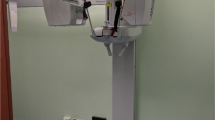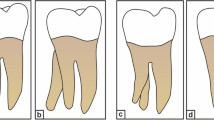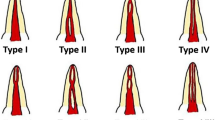Abstract
Objective The aim of this systematic review and meta-analysis was to integrate the detection of second mesiobuccal (MB2) canals in maxillary first molars reported by different studies and methods on the Indian population.
Methods This systematic review was conducted following Meta-analysis Of Observational Studies in Epidemiology (MOOSE) and PRISMA guidelines. A comprehensive search was conducted in PubMed, Medline, LILACS, Science Direct, Clinicaltrials.gov, CTRI and Cochrane databases to identify manuscripts published until 20 May 2021. Two independent reviewers assessed eligibility for inclusion, extracted data and assessed quality using the Newcastle-Ottawa Scale for cross-sectional studies.
Results The database search identified 534 citations, including 36 citations through manual search, and communications from authors. After removing duplicates and going through 534 abstracts followed by 26 full-text articles, 16 articles met the inclusion criteria and contributed data for the review. The included studies used CBCT, radiographs, direct vision (DV), dental operating microscope (DOM) or dental operating microscope with ultrasonic instrumentation (DOMI) for MB2 detection. Meta-analysis and forest plot showed a pooled prevalence of 64.76% of MB2 canals in permanent maxillary first molars using CBCT, 26.5% for DV, 60.4% for using magnification in addition to DV and 71.9% for DV and magnification assisted with ultrasonic instrumentation. The prevalence of MB2 was found to be more in men than women.
Conclusion The pooled prevalence in this systematic review and meta-analysis for detection of MB2 canals using CBCT was 64.76% compared to the global prevalence of 73.8%. Further well-designed studies are required to establish maxillary first molar MB2 prevalence in the Indian population.
This is a preview of subscription content, access via your institution
Access options
Subscribe to this journal
Receive 4 print issues and online access
$259.00 per year
only $64.75 per issue
Buy this article
- Purchase on Springer Link
- Instant access to full article PDF
Prices may be subject to local taxes which are calculated during checkout



Similar content being viewed by others
Change history
24 June 2022
A Correction to this paper has been published: https://doi.org/10.1038/s41432-022-0279-2
References
Das S, Warhadpande M M, Redij S A, Jibhkate N G, Sabir H J. Frequency of second mesiobuccal canal in permanent maxillary first molars using the operating microscope and selective dentin removal: A clinical study. Contemp Clin Dent 2015; 6: 74-78.
Kulid J C, Peters D D. Incidence and configuration of canal systems in the mesiobuccal root of Maxillary first and second molars. J Endod 1990; 16: 311-317.
Seidberg B H, Altman M, Guttuso J, Suson M. Frequency of two mesiobuccal root canals in maxillary permanent first molars. J Am Dent Assoc 1973; 87: 852-856.
Neaverth E J, Kotler L M, Kaltenbach R F. Clinical investigation (In Vivo) of endodontically treated maxillary first molars. J Endod 1987; 13: 506-512.
Karabucak B, Bunes A, Chehoud C, Kohli M R, Setzer F. Prevalence of apical periodontitis in endodontically treated premolars and molars with untreated canal: A cone-beam computed tomography study. J Endod 2016; 42: 538-541.
Vertucci F J. Root canal anatomy of the human permanent teeth. Oral Surg Oral Med Oral Pathol 1984; 58: 589-599.
Zhang Y, Xu H, Wang D et al. Assessment of the Second Mesiobuccal Root Canal in Maxillary First Molars: A Cone-beam Computed Tomographic Study. J Endod 2017; 43: 1990-1996.
Hess W, Zürcher E. The Anatomy of the Root-Canals of the Teeth of the Permanent Dentition. London: J. Bale, Sons & Danielsson, 1925.
Fogel H M, Peikoff M D, Christie W H. Canal configuration in the mesiobuccal root of the maxillary first molar: A clinical study. J Endod 1994; 20: 135-137.
Betancourt P, Navarro P, Muñoz G, Fuentes R. Prevalence and location of the secondary mesiobuccal canal in 1,100 maxillary molars using cone beam computed tomography. BMC Med Imaging 2016; 16: 66.
Naseri M, Kharazifard M J, Hosseinpour S. Canal Configuration of Mesiobuccal Roots in Permanent Maxillary First Molars in Iranian Population: A Systematic Review. J Dent (Tehran) 2016; 13: 438-447.
Martins J N R, Alkhawas M B A M, Altaki Z et al. Worldwide Analyses of Maxillary First Molar Second Mesiobuccal Prevalence: A Multicentre Cone-beam Computed Tomographic Study. J Endod 2018; DOI: 10.1016/j.joen.2018.07.027.
Martins J N R, Marques D, Silva E J N L, Caramês J, Versiani M A. Prevalence Studies on Root Canal Anatomy Using Cone-beam Computed Tomographic Imaging: A Systematic Review. J Endod 2019; DOI: 10.1016/j.joen.2018.12.016.
Al Shalabi R M, Omer O E, Glennon J, Jennings M, Claffey N M. Root canal anatomy of maxillary first and second permanent molars. Int Endod J 2000; 33: 405-414.
Stroup D F, Berlin J A, Morton S C et al. Meta-analysis of observational studies in epidemiology: A proposal for reporting. J Am Med Assoc 2000; 283: 2008-2012.
Moher D, Liberati A, Tetzlaff J et al. Preferred reporting items for systematic reviews and meta-analyses: The PRISMA statement. PLoS Med 2009; DOI: 10.1371/journal.pmed.1000097.
Lo C K L, Mertz D, Loeb M. Newcastle-Ottawa Scale: Comparing reviewers' to authors' assessments. BMC Med Res Methodol 2014; 14: 45.
Ganesh A, Muthu M S, Mohan A, Kirubakaran R. Prevalence of Early Childhood Caries in India - A Systematic Review. Indian J Paediatr 2019; 86: 276-286.
Nyaga V N, Arbyn M, Aerts M. Metaprop: A Stata command to perform meta-analysis of binomial data. Arch Public Health 2014; 72: 39.
Kosaraju D, Garlapati R, Bolla N, Potru L B, Billa M. Prevalence of Mb2 Canals in Maxillary Second and First Molars in Coastal Andhra Population - A Cone Beam Computed Tomography Study. J Indian Dent Assoc 2018; 12: 25-30.
Shivanna S, Amalavathy R K, Prakasam S. The Chambers of Secrets: Maxillary First Molar. Int J Oral Care Res 2016; 4: 273-275.
Tanvi M, Lalitagauri M. Evaluation of The Root Morphology of Maxillary Permanent First And Second Molars in An Indian Subpopulation Using Cone-Beam Computed Tomography. IOSR J Dent Med Sci 2016; 15: 51-56.
Sugastian G. Prevalence of second mesiobuccal canal using CBCT. Poster presented at IACDE PG Convention, SRM College, Chennai, Tamil Nadu, India. 2014.
Kewalramani R, Murthy C S, Gupta R. The second mesiobuccal canal in three-rooted maxillary first molar of Karnataka Indian sub-populations: A cone-beam computed tomography study. J Oral Biol Craniofac Res 2019; 9: 347-351.
Rathi S, Patil J, Jaju P P. Detection of Mesiobuccal Canal in Maxillary Molars and Distolingual Canal in Mandibular Molars by Dental CT: A Retrospective Study of 100 Cases. Int J Dent 2010; DOI: 10.1155/2010/291276.
Sujith R, Veerabhadrappa A, Chaurasia V, Dhananjaya K, Kasigari D, Naik S. Microscope magnification and ultrasonic precision guidance for location and negotiation of second mesiobuccal canal: An in vivo study. J Int Soc Prev Community Dent 2014; 4(Suppl 3): S209-S212.
Ghodke M, Kamtane S, Patil C et al. Incidence of Mesio-Buccal Canal (MB2) in Permanent Maxillary First Molar in an Indian Sub-Population of Pune by CBCT - A Radiological Study. Int J Curr Res 2018; 10: 548-550.
Surathu N, Ramesh S. Root Canal Morphology of Maxillary First Molars Using Cone Beam Computed Tomography. IOSR J Dent Med Sci 2015; DOI: 10.9790/0853-14930104.
Shetty H, Sontakke S, Karjodkar F, Gupta P, Mandwe A, Banga K S. A Cone Beam Computed Tomography (CBCT) evaluation of MB2 canals in endodontically treated permanent maxillary molars. A retrospective study in Indian population. J Clin Exp Dent 2017; DOI: 10.4317/jced.52716.
Felsypremila G, Vinothkumar T S, Kandaswamy D. Anatomic symmetry of root and root canal morphology of posterior teeth in Indian subpopulation using cone beam computed tomography: A retrospective study. Eur J Dent 2015; 9: 500-507.
Chennanjali K, Varma M K, Sajjan G S et al. Study of Root Canal Anatomy in Human Permanent Teeth in a Subpopulation of South India Region using Cone Beam Computed Tomography. Int J Curr Res 2019; 11: 2120-2125.
Kashyap R, Beedubail S, Kini R, Rao P. Assessment of the number of root canals in the maxillary and mandibular molars: A radiographic study using cone beam computed tomography. J Conserv Dent 2017; 20: 288-291.
Sunil Kumar S, Rambabu T, Sajjan G S, Sashikanth V, Vijaya Lakshmi B, Rajasekhar V. Detection of Second Mesio Buccal Canal in Maxillary First Molar with Unaided Eye, Surgical Loupes and Dental Operating Microscope: A Comparative In vivo Study. Adv Hum Biol 2015; 5: 43-48.
Silva E J N L, Nejaim Y, Silva A I V, Haiter-Neto F, Zaia A A, Cohenca N. Evaluation of root canal configuration of maxillary molars in a Brazilian population using cone-beam computed tomographic imaging: An in vivo study. J Endod 2014; 40: 173-176.
Vizzotto M B, Silveira P F, Arús N A, Montagner F, Gomes B P F A, da Silveira H E D. CBCT for the assessment of second mesiobuccal (MB2) canals in maxillary molar teeth: Effect of voxel size and presence of root filling. Int Endod J 2013; 46: 870-876.
Rosen E, Taschieri S, Del Fabbro M, Beitlitum I, Tsesis I. The Diagnostic Efficacy of Cone-beam Computed Tomography in Endodontics: A Systematic Review and Analysis by a Hierarchical Model of Efficacy. J Endod 2015; 41: 1008-1014.
Baldassari-Cruz L A, Lilly J P, Rivera E M. The influence of dental operating microscope in locating the mesiolingual canal orifice. Oral Surg Oral Med Oral Pathol Oral Radiol Endod 2002; 93: 190-194.
Guo J, Vahidnia A, Sedghizadeh P, Enciso R. Evaluation of Root and Canal Morphology of Maxillary Permanent First Molars in a North American Population by Cone-beam Computed Tomography. J Endod 2014; 40: 635-639.
Stropko J J. Canal morphology of maxillary molars: Clinical observations of canal configurations. J Endod 1999; 25: 446-450.
Hartwell G, Appelstein C M, Lyons W W, Guzek M E. Brief report: The incidence of four canals in maxillary first molars - A clinical determination. J Am Dent Assoc 2007; 138: 1344-1346.
Coelho M S, Lacerda M F L S, Silva M H C, de Azevêdo Rios M. Locating the second mesiobuccal canal in maxillary molars: Challenges and solutions. Clin Cosmet Investig Dent 2018; 10: 195-202.
Parker J, Mol A, Rivera E M, Tawil P. CBCT uses in clinical endodontics: the effect of CBCT on the ability to locate MB2 canals in maxillary molars. Int Endod J 2017; 50: 1109-1115.
Neelakantan P, Subbarao C, Ahuja R, Subbarao C V, Gutmann J L. Cone-beam computed tomography study of root and canal morphology of maxillary first and second molars in an Indian population. J Endod 2010; 36: 1622-1627.
Bhuyan A C, Kataki R, Phyllei P, Gill G S. Root canal configuration of permanent maxillary first molar in Khasi population of Meghalaya: An in vitro study. J Conserv Dent 2014; 17: 359-363.
Mathew T, Shetty A, Hegde M N, Babu B, Shetty S K. Study of the Morphology of MB2 Canals in Maxillary First Molars Using CBCT. Indian J Public Health Res Dev 2019; 10: 105-108.
Author information
Authors and Affiliations
Contributions
Conceptualisation: Subha A, Suneelkumar C. Curation: Subha A, Suneelkumar C, Richard K. Formal analysis: Suneelkumar C, Lavanya A, Himasindhu U. Investigation: Suneelkumar C, Subha A, Lavanya A. Methodology: Subha A, Suneelkumar C, Lavanya A, Himasindhu U. Project administration: Suneelkumar C, Lavanya A, Subha A. Resources: Subha A, Suneelkumar C, Himasindhu, Lavanya A. Software: Subha A, Suneelkumar C. Supervision: Subha A, Suneelkumar C, Lavanya A. Validation: Subha A, Suneelkumar C, Lavanya A. Visualisation: Lavanya A, Subha A, Suneelkumar C. Writing - original draft: Subha A, Suneelkumar C, Lavanya A. Writing - review and editing: Subha A, Suneelkumar C, Lavanya A, Richard K.
Corresponding author
Ethics declarations
The authors declare no conflicts of interest.
Supplementary Information
Rights and permissions
About this article
Cite this article
Anirudhan, S., Suneelkumar, C., Uppalapati, H. et al. Detection of second mesiobuccal canals in maxillary first molars of the Indian population - a systematic review and meta-analysis. Evid Based Dent (2022). https://doi.org/10.1038/s41432-022-0233-3
Received:
Accepted:
Published:
DOI: https://doi.org/10.1038/s41432-022-0233-3



